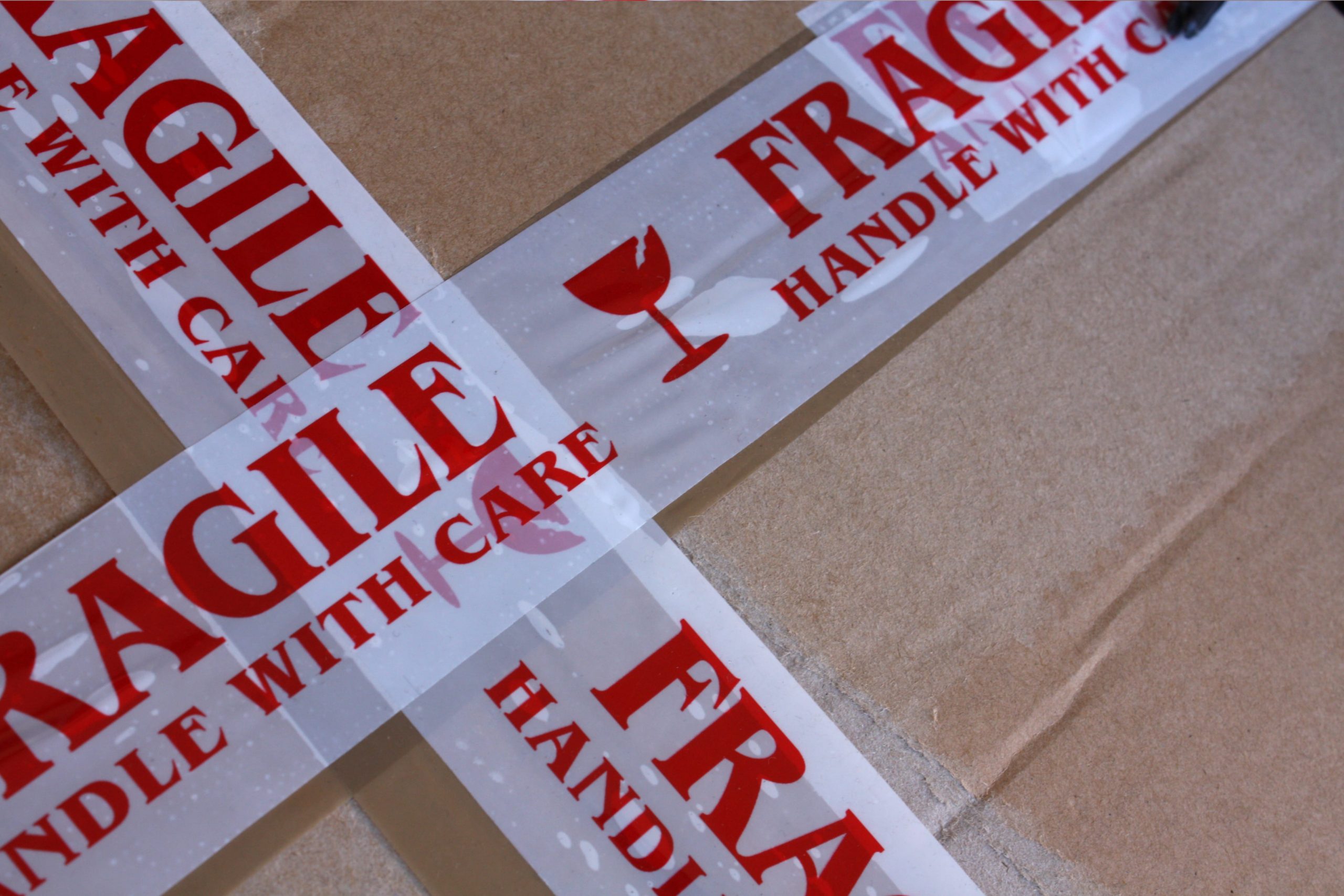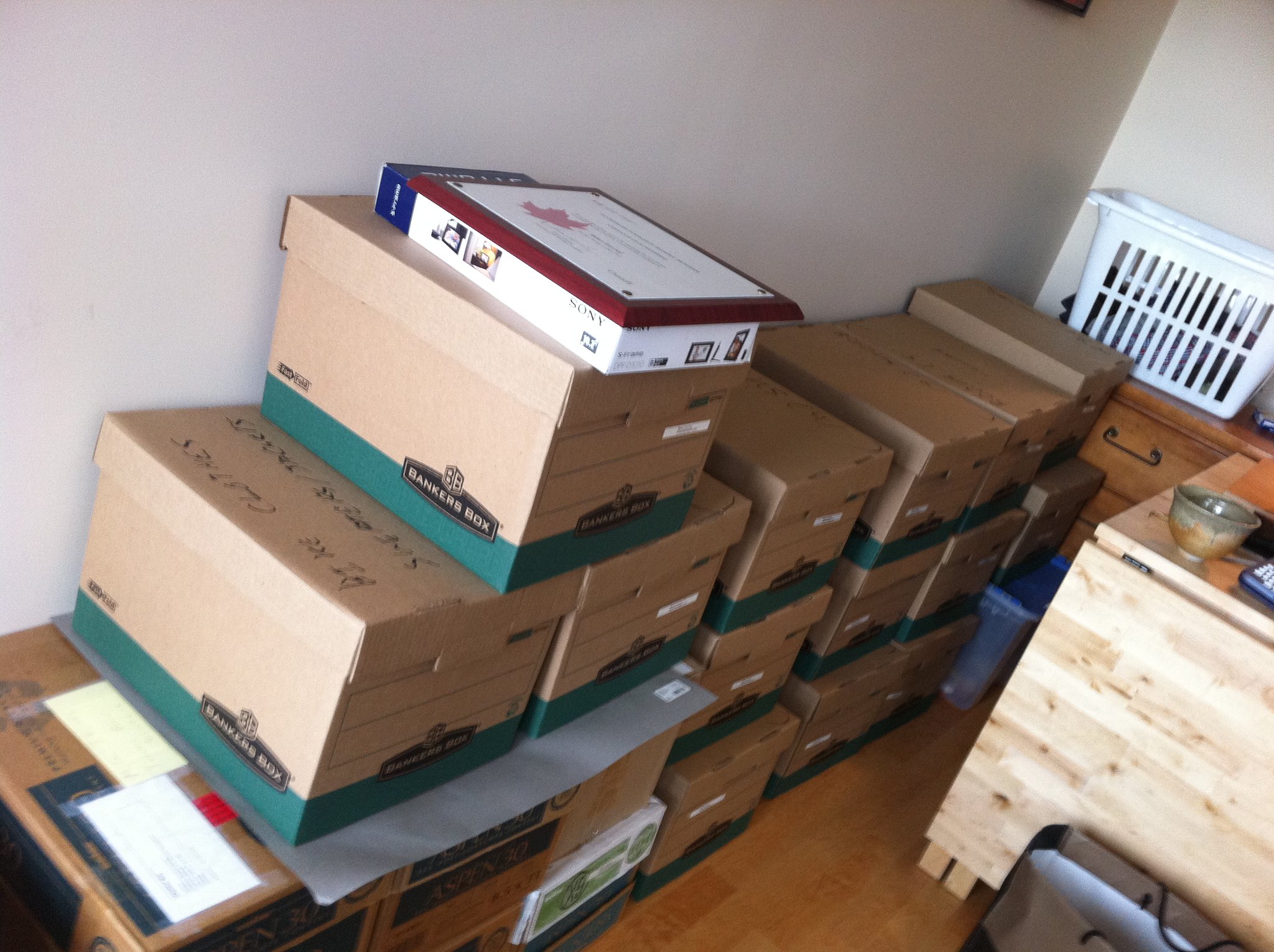If you’re a bookworm chances are you have a vast collection of the greatest novels and biographies ever written. The last thing you’d want is for something you’ve spent years compiling to get ruined on your more. Knowing how to pack books for moving will ensure that your books are safe and that the moving company has an easy time transporting them.
8 Tips for Packing Books for Moving
When you decide to move, there are many things you can do to make moving your books easier.

1. Make Your Book Collection Smaller
It is a great idea to carefully go through your book collection and weed out the books you no longer need, especially if you have hired movers to help with your move. You can be charged by weight per box, so it is important to narrow your book collection down to books you must have and books that can be parted with.
If you want the books you are no longer keeping to be put to good use, donate them. Second hand stores, libraries, schools, and churches are just some examples of places you can donate them to. Donating your books gives them a chance at being reused by somebody else instead of being buried in a landfill.
2. Use the Right Type of Box
Make sure that when you pack your books, you are storing them in the right sized box. The best boxes for moving books are 1.5 cubic foot boxes or a smaller size will work as well. You can purchase these types of boxes on Amazon, at U-Haul, Walmart, Lowe’s, or Home Depot. Book boxes for moving that are bigger than this tend to break because they are not meant to hold the weight of your books and might break open from the bottom.
3. Know How to Pack Books the Right Way
Your books need to be packed the right way so you can properly store them and utilize the space inside the box. So many people assume that books need to be packed standing up like they would on a shelf, but that is actually the incorrect way to pack them. You should pack them laying down flat and build them up into columns. Pack them binding to binding so the spines of the books can brace each other. If there is any space left in your box, you can fill in the empty spaces with paperback books and fill it right up to the top edge of the box.
4. Have Lots of Tape and Supplies
Clear packing tape is the best kind of tape to use when packing boxes. It will be sure to keep your boxes closed. However, you can also use masking tape if you are looking for a tape that is easier to remove. The choice is completely up to you. In case you don’t have a lot of paperback books to fill the empty spaces in your boxes, you can use newspaper, rags, towels, or basically anything that you can stuff in there to prevent your books from moving around. Have these things on hand in case you need them when packing your books.
Need Movers? Your Move, Your Choice

Instant Exact Cost for Your Specific Move
Agoyu’s AI technology give you quick, precise estimates. Scan your room, receive instant quotes from multiple movers, and confidently select the best option for you.
STEP 1 OF 3
or Have a Top Mover Call Me Now!
Do it the old fashion way! A top mover will call you to provide an instant quote over the phone or at your house!
5. Care for Your Fragile Books
If you have books that are expensive, old, or damaged in any way, you should pack them very carefully. Even if you have a somewhat small move from California to Washington, it is important to properly care for your books to avoid any damage. Wrap them individually in either old newspaper or packing paper. Use acid free paper for your really old books so the covers do not get damaged. You even can place bunched up newspaper or bubble wrap on the bottom of the box to ensure that the covers don’t bend or get damaged in any way.
If you have any old photo books or albums, first edition books, or anything else of great value, put a piece of sturdy cardboard in between each book. This will keep the spines straight and prevent them from moving.
6. Pack Your Heavy Books First
It is important to know how to pack boxes when moving. Pack your heavy books first and put them at the bottom of the box. Stack them on top of each other so they are level. Packing your heaviest books first is best so your lighter books don’t get damaged from being on the bottom.
7. Set Your Favorite Books Aside
Many book lovers can’t imagine a day without reading one of their favorite books. The thought of all your books being packed away inside of a box is tough to think about. Keep some of your favorite books set aside and maybe carry them in a backpack so you have them available to you. Having your favorite books nearby may help you feel some comfort in a stressful time.
8. Place Them Correctly in the Truck
Whether you have hired professional movers or are moving your belongings yourself, it is important to understand where to place your books in the moving truck or van. Besides placing the heaviest boxes on the bottom, make sure your book boxes are not topped with anything heavy like furniture or other heavy items. Load your boxes with care and do not pile them high.
Best Way to Pack Books for Moving
Libraries pack and ship hundreds of books across the country every week. For example, if you are moving from California to Florida, it makes the most sense to follow the procedures perfected by libraries when moving our books. Here are instructions to follow on how to pack books for moving.

1. Pack Your Books Into Boxes
Since you have already sorted through your book collection, it is safe to say you are packing your “must have” books. The best way to pack books is to place them in small boxes, placing the heaviest books on the bottom. If you do not have any boxes, there is always an alternative. You can also carefully pack your books in suitcases, preferably rolling suitcases to make it easier to move, or large backpacks will work as well.
2. Fill In Empty Spaces
Once you have your books stacked from heaviest to lightest, fill in the empty spaces with paperback books, packing paper, newspapers, yarn, old clothing, or anything you can think of that you can stuff into the empty spaces. If you are filling in the spaces with paperback books, be sure to pack them with the paper edges facing up so the pages don’t bend. Make sure there is no wiggle room so your books do not get damaged.
3. Seal the Boxes
When all your books are packed, close the box. Use clear or brown packing tape, or you can use masking tape if you want to easily remove the tape. It is important to keep in mind that if you use masking tape, the box might come open at some point. Packing tape is much sturdier, but does not open easily. Make sure to use a few layers of tape to prevent your box from opening up during your move.
4. Label Your Boxes
Write on your boxes “Books” so you know that those specific boxes contain your books. You can label the top of the box, side of the box, or both. Labeling your boxes is important so there is no confusion about what the box holds. In case you have your books separated by category, label the boxes based on the category of your books. For example, instead of “Books”, you can label your boxes “Classic Books”, “Mystery Books”, “Horror Books”, “Adventure Books” and so on.
5. Pack It Up
If you have professional movers helping you with your move, have them carefully place your boxes on the floor of the moving truck. Ensure that they are not placed in a pile or by any heavy pieces of furniture. Placing your boxes of books near anything that is really heavy is not a good idea. If that heavy object were to fall over or slide, it might damage your box of books. It is important to make sure they are not stacked so the boxes do not fall over and cause any damage to your books or other belongings.
Conclusion
With all these tips, knowing how to pack books for moving should be much easier now. Packing your books is not as difficult as it sounds. The most difficult part might even be parting with the books you no longer need. If you need help packing your books, using a moving app like Agoyu can help you locate the best moving companies to help make the process smoother.





